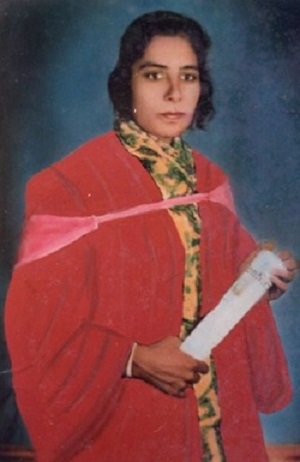Oct 30, 2025
Oct 30, 2025
This is a translation of the original in Hindi written by Dr. Aruna Tyagi
Continued from Previous Page
 Gandhiji’s words sound so true today – “Even if the Britishers stay in India, but the British language and culture should leave.” But the reality is contrary to what he had thought. He said – “Without our own National Language, the identity of an independent nation is not possible. That is why, the way we have thrown away the British regime, we need to eradicate the English language, too.”
Gandhiji’s words sound so true today – “Even if the Britishers stay in India, but the British language and culture should leave.” But the reality is contrary to what he had thought. He said – “Without our own National Language, the identity of an independent nation is not possible. That is why, the way we have thrown away the British regime, we need to eradicate the English language, too.”
Further, Gandhiji’s thoughts have proved to be very useful. He has termed English language as the small amount of the loan that still hovers over the Indians. Lord Macaulay had stated in clear terms – “English language shall create a class of persons, Indian in blood and colour, but English in taste, in opinions, in morals and in intellect. This effect could not be produced by religious means but through the influence of English language.” We can claim that something that stands against our National Pride can never be the medium of achieving National Unity. Only that language can form the basis of National Unity which is spoken, written and read by the masses – only Hindi is such a language in India. According to ‘Dusht Tosh Nyay’, Canada and Switzerland are also multilingual countries just like India. In these countries, even after accepting the prevalence of linguistic differences, the National Unity has been established by accepting one National Language.
Mysore’s former Chief Minister, Shri Nijlingappa, had strongly supported Hindi as the rightful contender for the position of the National Language. Recently, Kerala’s Chief Minister, Shri Namboodripad, had clearly stated – “There should be one language of communication in India, and that can be only Hindi.” In the West, Maharashtra and Gujarat are strong supporters of Hindi. The foreign philosopher, John Bimbus while composing the Comparative Grammar of the modern Aryan Languages, has accepted Hindi as the Mother of all these languages. Shri Chivlunkar Aangarkar, taking pride in Marathi, has still supported Hindi to be enthroned as the National Language. In 1888, ‘Kesari’, too, supported Hindi.
As far as the medium of instruction in the field of Education is concerned – every part of the country is, in unison, in favour of the Mother Tongue as the medium of instruction in the field of Education. Gandhiji has said – “The cultural damage caused by English, if allowed to stay even one more day based on any excuse, shall be much more than the damage caused by teaching without text books.” No honourable country can tolerate the harm done to its privacy and pride. Thus, indisputably, Hindi shall be the medium of Education. According to the present census, there are 70 Universities * in the Indian Federation, which provide higher education in the field of Art, Science and Technology. In the Conference of Vice-Chancellors held at Delhi, the Central Education Minister declared that in 35 out of 70 Universities, there are 90 percent students who are interested in receiving education in the regional language. 17 Universities have already approved the education in regional languages at post-graduate levels.
(* There were 70 Universities in India in 1968)
Continued to Next Page
02-Jan-2021
More by : Dr. Giti Tyagi